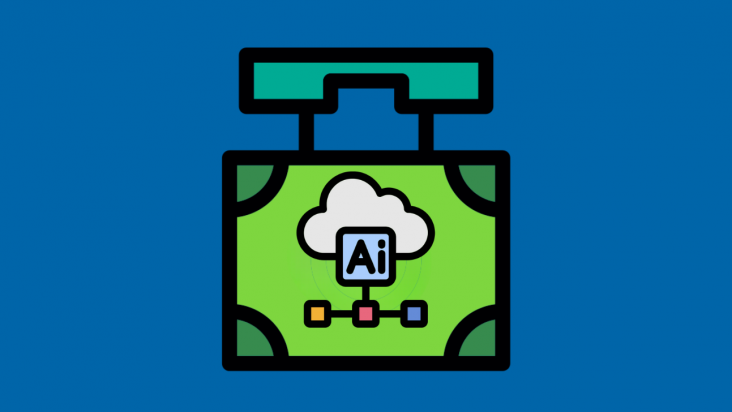Best Public Datasets for Data Analysis: Level Up Your Skills
In the field of data analysis, high-quality data sets are the fuel for deep discoveries. These resources serve as a cornerstone for developing predictive models, understanding trends, and making data-driven decisions. But with the huge amount of data available, how do you choose the right one? This article examines in detail interesting data sets, classified by their types such as social, financial, medical, environmental, and governmental, to name just a few.
There are also relevant links to certain sets of data, which will greatly facilitate your search for the necessary resources. Moreover, you can familiarize yourself with the algorithm for selecting the required repository, the types of datasets and the criteria for their selection.
Datasets for data analysis
Social Datasets
- Twitter Sentiment Analysis: Available through Twitter’s Developer API for analyzing tweets and sentiments.
- Facebook Data: Accessible via Facebook’s Graph API for insights on user interactions.
- Instagram Insights: Obtainable through Instagram’s Graph API for data on posts, profiles, and engagement.
- Reddit Data: Reddit’s API provides access to subreddit data, comments, and user activities.
- LinkedIn Professional Networks: LinkedIn’s API offers data on user profiles, connections, and professional activities.
Financial Datasets
- Stock Market Datasets: Yahoo Finance provides historical stock prices and market data.
- Banking Transactions: The Consumer Financial Protection Bureau offers datasets on banking and financial transactions.
- Cryptocurrency Prices: CoinDesk’s API for real-time and historical cryptocurrency data.
- Consumer Spending Data: The Bureau of Economic Analysis provides data on consumer spending in the US.
- Loan and Credit Data: The Federal Reserve offers various datasets on loans, credits, and financial activities.
Health Datasets
- Patient Records: HealthData.gov has a variety of healthcare datasets, including patient records.
- Genomic Data: The National Center for Biotechnology Information provides access to genomic datasets.
- Clinical Trials Data: ClinicalTrials.gov offers a database of privately and publicly funded clinical studies.
- Health Insurance Claims: The Centers for Medicare & Medicaid Services provide datasets on healthcare claims.
- Wearable Device Data: While specific datasets aren’t publicly available, platforms like Apple HealthKit allow for the collection of wearable device data.
Environmental Datasets
- Climate Data: NASA provides extensive datasets on climate and earth observations.
- Pollution Data: The Environmental Protection Agency offers data on air and water quality.
- Water Quality Data: The US Geological Survey provides data on water quality and resources.
- Biodiversity Datasets: The Global Biodiversity Information Facility offers data on species and biodiversity.
- Renewable Energy Data: The U.S. Energy Information Administration provides data on renewable energy production and consumption.
Educational Data
- National Center for Education Statistics (NCES) The NCES is a primary source for data related to American education. It offers comprehensive datasets on various aspects of education, from pre-K to postgraduate levels. Visit NCES
- Programme for International Student Assessment (PISA): Conducted by the OECD, PISA assesses the reading, mathematics, and science skills of 15-year-olds across the world. It provides valuable insights into the effectiveness of education systems globally. Explore PISA
- EdStats (World Bank Education Statistics): EdStats offers a wealth of data on global education indicators, providing insights into educational access, completion rates, and learning outcomes across countries. Access EdStats
- Integrated Postsecondary Education Data System (IPEDS): Managed by the NCES, IPEDS offers data on U.S. postsecondary institutions, covering programs offered, enrollment, graduation rates, and post-graduation employment outcomes. Check out IPEDS
- Trends in International Mathematics and Science Study (TIMSS): TIMSS provides reliable and timely data on the mathematics and science achievement of U.S. students compared to that of students in other countries. Visit TIMSS
Government and Public Data
- Census Data: The U.S. Census Bureau provides comprehensive demographic data.
- Public Transport Data: The National Transit Database offers data on public transportation systems.
- Economic Indicators: The Bureau of Economic Analysis publishes data on economic indicators like GDP and consumer spending.
- Public Health Data: The World Health Organization’s Global Health Observatory provides a wide range of health-related datasets.
- Education Data: The National Center for Education Statistics offers datasets on educational institutions and outcomes in the US.
Choose dataset for project
Choosing the right dataset for your project is a critical step that can determine the success of your data analysis or research. Here are some key steps to guide you through the process:
- Define Your Objectives: Clearly articulate the goals of your project. Understand what questions you are trying to answer or what problems you aim to solve. This clarity will guide your dataset selection process.
- Understand Dataset Requirements: Based on your objectives, list down the specific requirements your dataset must meet. This could include the type of data (numerical, categorical, text), time period, geographical coverage, and the variables it must contain.
- Search for Available Datasets: Utilize online repositories, academic databases, government websites, and other sources to find datasets that match your criteria. Pay attention to sources that are reputable and trusted within your field of study or industry.
- Evaluate Data Quality: Assess the datasets for quality and reliability. Look for datasets that are well-documented, with clear explanations of how the data was collected, any biases that may exist, and any limitations of the dataset.
- Check for Data Completeness: Ensure the dataset covers all necessary aspects of your research and doesn’t have significant gaps. Missing data can lead to biased results and can affect the validity of your analysis.
- Review Legal and Ethical Considerations: Verify that the dataset can be legally used for your intended purpose and that its use complies with any ethical guidelines relevant to your field, especially if dealing with sensitive or personal information.
- Assess the Dataset Size and Format: Make sure the dataset is in a usable format and that you have the necessary tools and resources to handle its size. Large datasets may require more sophisticated tools and infrastructure.
- Conduct a Preliminary Analysis: Perform a basic analysis to understand the dataset’s structure, quality, and whether it aligns with your objectives. This step can help identify any issues before you commit to using the dataset for your full project.
- Consider the Update Frequency: If your project requires the most current data, check how frequently the dataset is updated. This is crucial for projects that rely on real-time data or recent trends.
- Seek Expert Advice: If possible, consult with peers or experts in your field. They can provide valuable insights on the selection of the right dataset and may suggest datasets you haven’t considered.
By following these steps, you can systematically evaluate potential datasets and select the one that best fits the needs of your project, ultimately enhancing the quality and reliability of your analysis or research.
Types of Datasets
When diving into the realm of information analysis, one encounters a diverse landscape of collections. These repositories can broadly be categorized into structured versus unstructured forms, as well as public versus private domains.
- Structured vs. Unstructured: In the structured universe, elements are neatly organized into predefined models, making it easier for algorithms to digest and interpret. Imagine a well-kept library where every book has its place. Conversely, unstructured arenas are akin to a vast ocean, where insights float freely without a fixed anchor, challenging explorers to find and harness them.
- Public vs. Private: On another front, datasets are distinguished by their accessibility. Public troves are open gardens where anyone can wander and pluck fruits of knowledge. These are often provided by governmental or academic institutions. In contrast, private vaults are guarded treasures, held closely by corporations or entities, accessible only to a select few under strict conditions.
Criteria for Premier Datasets
Identifying premier resources involves assessing them across four critical dimensions: volume, variety, velocity, and veracity.
- Volume: This dimension reflects the sheer magnitude of insights contained within a repository. Think of it as the depth of an ocean, where a greater depth might harbor more secrets and possibilities. High-volume collections offer a rich bed for mining insights but require robust tools to navigate.
- Variety: Diversity is key in the world of information. A rich tapestry of formats and sources – from numerical entries and text documents to multimedia files – provides a more holistic view of the landscape being studied. It’s akin to having a multicultural lens to view the world, unveiling nuanced understandings that a single perspective might miss.
- Velocity: The speed at which new insights are generated and collected is crucial, especially in fast-paced domains. High velocity means that the collection is constantly refreshed with current entries, ensuring that analyses remain relevant and timely. It’s the difference between a flowing river and a stagnant pond, where the former brings fresh life and opportunities at every turn.
- Veracity: The integrity and accuracy of the contents are paramount. Veracity ensures that the insights gleaned are dependable and can be acted upon with confidence. This can be likened to the purity of water in our earlier analogy; only pure, uncontaminated sources can sustain life and growth.
Navigating through these dimensions allows one to discern the most valuable collections for their analytical endeavors, ensuring that the insights extracted are both rich and reliable, poised to illuminate the path ahead.
FAQ
A1: Most datasets can be found on their respective platforms' official APIs, public data repositories like Kaggle, government websites, and specialized data providers.
A2: Yes, it's important to consider copyright, privacy laws, and terms of service when using datasets, especially those containing personal or sensitive information.
A3: Assess the dataset for completeness, accuracy, timeliness, consistency, and relevance. Also, consider the source's credibility and the data collection methods.
A4: Absolutely. Many of these datasets are ideal for training machine learning models, provided they are relevant to your project's objectives







